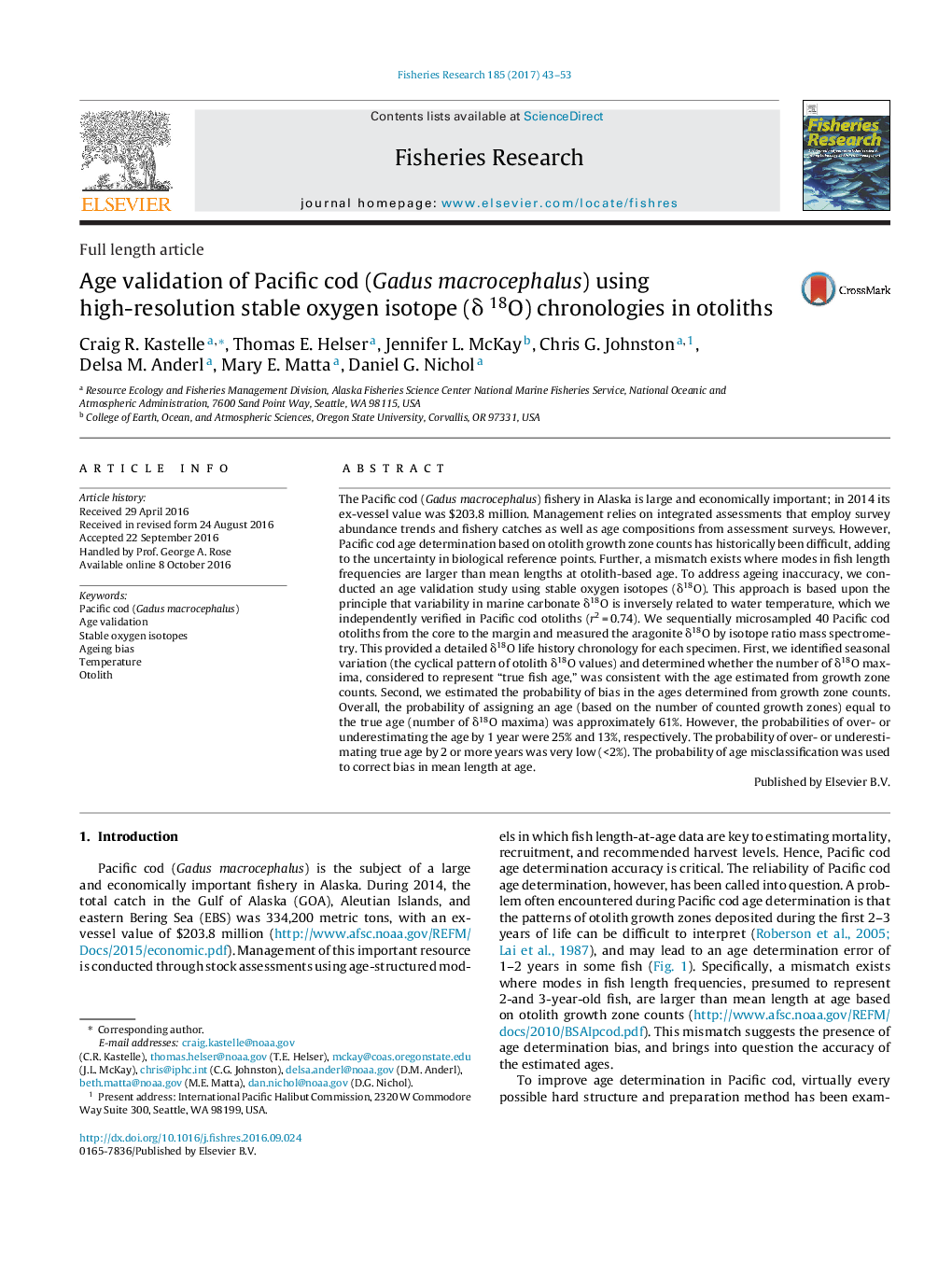| کد مقاله | کد نشریه | سال انتشار | مقاله انگلیسی | نسخه تمام متن |
|---|---|---|---|---|
| 4542639 | 1626784 | 2017 | 11 صفحه PDF | دانلود رایگان |
The Pacific cod (Gadus macrocephalus) fishery in Alaska is large and economically important; in 2014 its ex-vessel value was $203.8 million. Management relies on integrated assessments that employ survey abundance trends and fishery catches as well as age compositions from assessment surveys. However, Pacific cod age determination based on otolith growth zone counts has historically been difficult, adding to the uncertainty in biological reference points. Further, a mismatch exists where modes in fish length frequencies are larger than mean lengths at otolith-based age. To address ageing inaccuracy, we conducted an age validation study using stable oxygen isotopes (δ18O). This approach is based upon the principle that variability in marine carbonate δ18O is inversely related to water temperature, which we independently verified in Pacific cod otoliths (r2 = 0.74). We sequentially microsampled 40 Pacific cod otoliths from the core to the margin and measured the aragonite δ18O by isotope ratio mass spectrometry. This provided a detailed δ18O life history chronology for each specimen. First, we identified seasonal variation (the cyclical pattern of otolith δ18O values) and determined whether the number of δ18O maxima, considered to represent “true fish age,” was consistent with the age estimated from growth zone counts. Second, we estimated the probability of bias in the ages determined from growth zone counts. Overall, the probability of assigning an age (based on the number of counted growth zones) equal to the true age (number of δ18O maxima) was approximately 61%. However, the probabilities of over- or underestimating the age by 1 year were 25% and 13%, respectively. The probability of over- or underestimating true age by 2 or more years was very low (<2%). The probability of age misclassification was used to correct bias in mean length at age.
Journal: Fisheries Research - Volume 185, January 2017, Pages 43–53
